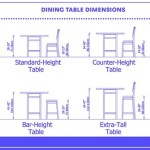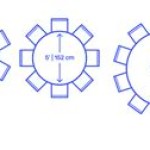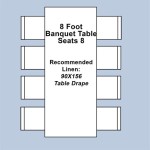Fish Tank Living Room Table: Blending Aquatic Beauty and Functional Design
The fish tank living room table represents a unique intersection of interior design and aquatic hobby keeping. It's a functional piece of furniture that doubles as a vibrant ecosystem, bringing the calming presence of an aquarium directly into the heart of the living space. While aesthetically striking, a fish tank table requires careful consideration and planning to ensure the well-being of the aquatic inhabitants and the longevity of the furniture itself.
These tables can vary widely in design, from simple coffee tables with built-in tanks to larger, more elaborate console tables. Regardless of the specific configuration, the primary objective remains the same: to create a visually appealing and harmonious environment for both the viewer and the fish.
Key Considerations in Designing a Fish Tank Table
Several factors are crucial when designing or selecting a fish tank living room table. These include structural integrity, water quality management, accessibility for maintenance, and the overall aesthetic integration within the living space.
Structural Integrity: The table's construction must be robust enough to support the significant weight of water, substrate (gravel or sand), decorations, and the tank itself. Tempered glass or acrylic are common materials for the tank portion, chosen for their clarity and strength. The table frame typically consists of wood, metal, or a combination thereof, engineered to distribute the weight evenly. It's imperative to calculate the load capacity accurately to prevent structural failure.
Estimating the weight involves calculating the volume of the tank in gallons or liters and then converting that to weight. One gallon of water weighs approximately 8.34 pounds (3.78 kilograms). Adding the weight of the glass or acrylic, substrate, and decorations results in the total weight the table must support. Consulting with a structural engineer or experienced aquarium builder is advisable for larger or complex designs.
Water Quality and Filtration: Maintaining pristine water quality is essential for the health and survival of the fish and other aquatic life. A well-designed filtration system is paramount. This typically involves a combination of mechanical, chemical, and biological filtration. Mechanical filtration removes particulate matter, chemical filtration removes dissolved impurities, and biological filtration establishes beneficial bacteria colonies that convert harmful ammonia and nitrites into less toxic nitrates.
The choice of filter depends on the size of the tank, the number of fish, and the specific needs of the chosen species. Common filter types include canister filters, hang-on-back filters, and sump systems. Canister filters are highly effective but may require more space. Hang-on-back filters are more compact and easier to install. Sump systems, typically located in a cabinet beneath the table, offer the most comprehensive filtration and allow for easy integration of other equipment, such as heaters and protein skimmers (for saltwater tanks).
Regular water changes are also crucial for maintaining water quality. Partial water changes, typically 25-50% of the tank volume, should be performed weekly or bi-weekly to remove accumulated nitrates and replenish essential minerals. Monitoring water parameters, such as ammonia, nitrite, nitrate, pH, and temperature, is essential using test kits or electronic monitors.
Accessibility for Maintenance: Regular maintenance is unavoidable with any aquarium. The design of the fish tank table must facilitate easy access for cleaning, water changes, filter maintenance, and other routine tasks. Removable lids or access panels should be incorporated to allow for reaching into the tank without disturbing the surrounding furniture. The space beneath the table should be ample enough to accommodate buckets, cleaning supplies, and other necessary equipment.
Planning for water drainage is also essential. Draining large volumes of water can be cumbersome without a dedicated drainage system. Installing a drain valve at the bottom of the tank, connected to a hose, can simplify water changes. Alternatively, a siphon can be used to remove water into a bucket.
Selecting Appropriate Aquatic Life
The selection of fish and other aquatic life must align with the size and parameters of the fish tank table. Overcrowding is a common mistake that can lead to stress, disease, and poor water quality. Researching the specific needs of each species is essential before introducing them to the tank.
Tank Size and Stocking Levels: A general rule of thumb is to allow at least one inch of adult fish length per gallon of water. However, this is a simplified guideline and does not account for the activity level of the fish, their social behavior, or the complexity of the aquascape. Active fish, such as danios or tetras, require more swimming space than sedentary fish, such as bottom dwellers. Social fish, such as schooling species, need to be kept in groups of at least six individuals to feel secure and exhibit natural behaviors.
Compatibility of Species: Not all fish are compatible. Some species are territorial or aggressive and may harass or even kill other fish. Researching the temperament and social requirements of each species is crucial to prevent conflicts. Avoid mixing fish that have vastly different water parameter requirements. For example, African cichlids, which prefer hard, alkaline water, should not be kept with South American tetras, which prefer soft, acidic water.
Considerations for Plants and Invertebrates: Live aquatic plants not only enhance the aesthetic appeal of the tank but also contribute to water quality by absorbing nitrates and releasing oxygen. Choosing plants that are compatible with the fish and the water parameters is important. Invertebrates, such as snails and shrimp, can also be beneficial additions to the tank, helping to control algae and scavenge for uneaten food. However, some invertebrates may be sensitive to certain medications or water parameters.
Aesthetic Integration and Design Styles
The fish tank living room table should seamlessly integrate with the overall aesthetic of the living space. The design of the table, the aquascape, and the choice of fish and decorations should complement the existing furniture, color scheme, and décor.
Matching the Decor: The style of the table can range from modern and minimalist to traditional and ornate. Choose a design that complements the existing furniture and décor. A sleek, glass-topped table with a minimalist aquascape may be suitable for a modern living space, while a wooden table with a more naturalistic aquascape may be a better fit for a traditional setting.
Aquascaping Techniques: Aquascaping involves arranging rocks, wood, plants, and other decorations to create a visually appealing and functional environment for the fish. Several aquascaping styles exist, each with its own distinct characteristics. The Iwagumi style emphasizes the use of rocks to create a sense of scale and perspective. The Dutch style focuses on the arrangement of densely planted aquatic plants. The nature aquarium style aims to replicate natural ecosystems, such as riverbeds or forests.
Lighting and Visual Appeal: Proper lighting is essential for both the health of the plants and the visual appeal of the tank. LED lighting is a popular choice due to its energy efficiency and ability to produce a wide spectrum of light. The color temperature of the light can affect the appearance of the fish and plants. Warmer light (lower color temperature) tends to enhance the colors of the fish, while cooler light (higher color temperature) promotes plant growth.
Paying attention to the details, such as the placement of the lighting, the arrangement of the substrate, and the choice of decorations, can significantly enhance the overall visual impact of the fish tank table. Hiding equipment, such as heaters and filter intakes, can also contribute to a cleaner, more aesthetically pleasing appearance.
The fish tank living room table is more than just a piece of furniture; it's a living ecosystem that brings a touch of nature indoors. Careful planning, diligent maintenance, and a deep understanding of aquatic life are essential for creating a thriving and visually stunning addition to any living space.

Glass Coffee Table Aquariums Are Now A Thing And They Re Spectacular Looking Aquarium Dream House Decor Fish Tank

Glass Coffee Table Aquariums Are Now A Thing And They Re Spectacular Looking Inspiring Designs

Glass Coffee Table Aquariums Are Now A Thing And They Re Spectacular Looking Inspiring Desig Aquarium Fish Tank

Glass Coffee Table Aquariums Are Now A Thing And They Re Spectacular Looking Inspiring Desig Aquarium Fish Tank

Square Glass Aquarium Coffee Table Living Room Fish Tank Interior Design Ideas

Coffee Table Aquarium

Top 40 Amazing Aquarium Coffee Table Design Ideas Engineering Discoveries

Coffee Table Fish Aquarium At Rs 13500 Piece In Meerut Id 2852747844212

These Aquarium Dining Tables Will Make Waves At Your Next Dinner Party Inspiring Designs

Spectacular Diy Fish Tank Coffee Table Free Guide And Tutorial
Related Posts








